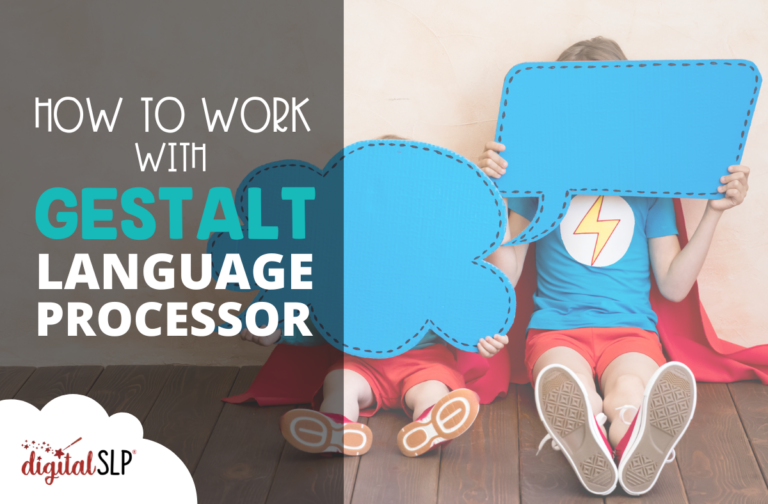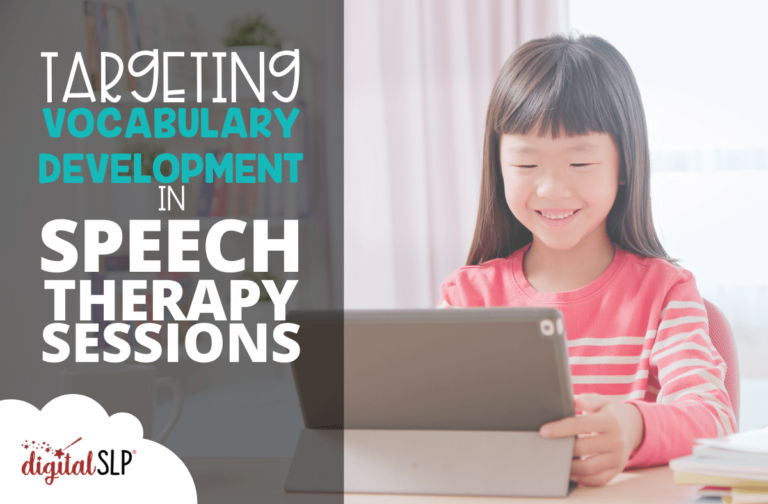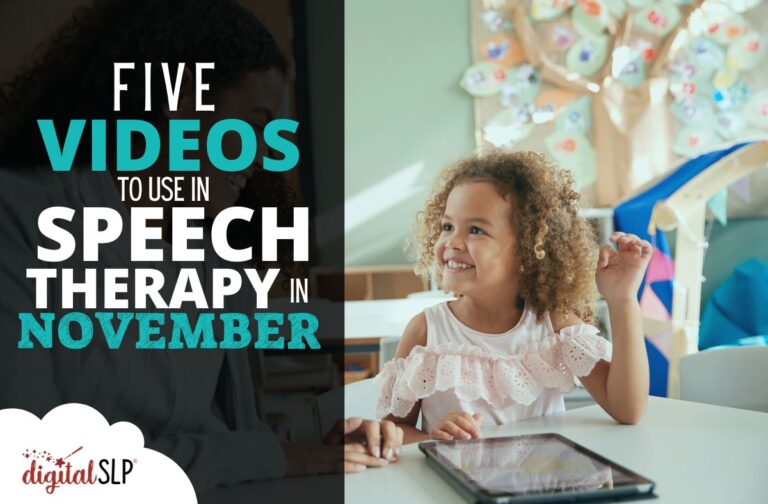As speech-language pathologists have begun to listen to autistic voices, we are learning more about gestalt language processors and how to support their language development. In this blog post, I’ll share an overview of what it means to be a gestalt language processor, as well as ideas for how to work with gestalt language processors in speech therapy.
What is a Gestalt Language Processor?
A gestalt language processor is someone who, in the earlier stages of language development, communicates using learned “chunks” of words (also known as “scripts,” “gestalts,” or “echolalia”). These children progress through predictable stages of language development and can learn how to break down familiar scripts and assemble the words into novel utterances, ultimately using flexible, self-generated language. Gestalt language processors are “whole to part” language learners.
Many of us are more familiar with analytic language processors, who also follow predictable stages of language development, but instead move from syllables to words/word combinations, then to sentences and beyond. Analytic language processors are “part to whole” language learners.
When children are very young, they may use a combination of gestalt and analytic language processing. Also, gestalt language processors are often autistic, but not always.
How Do I Know if a Child is a Gestalt Language Processor?
Listen for:
Prosody/Intonation
Often, the utterances used by gestalt language processors are full of rich intonation. Even if the words seem situationally irrelevant (or are unintelligible), the prosody can be a clue to what the child is communicating.
Gestalts/Delayed Echolalia/Scripts
Perhaps the clearest sign we are working with a gestalt language processor is the presence of scripts in their communication. These scripts (word combinations of varying lengths) might be something the child has heard at school (“Time to line up”) or in media (“Adventure is out there!”).
Seemingly Inflexible Language
Another sign that we are working with a gestalt language processor is that they use the same script in multiple situations, e.g., saying “Time to line up” whenever they leave the house, before each meal, and when going to bed.
Supporting Gestalt Language Processors
Once we know we are working with gestalt language processors, we have the opportunity to support them in moving through the stages of their language development and ultimately becoming flexible, spontaneous communicators. Here’s how:
Honor Their Communication!
This is vital. Even if a gestalt language processor is using a script that is confusing in context, we need to recognize and respond to it for what it is: legitimate communication. When we don’t know exactly what the child is trying to say, we can (and should!) still take our turn in the conversation after a script has been produced, even if that just means a brief comment or a smile.
Be a Detective
In order for our support to be as effective as possible, we do need to try and understand what our gestalt language processors are saying. To do this, we can use all the tools at our disposal! Observe, listen, talk to parents, and most importantly, keep a log that includes 1) the utterance, 2) when/where it was used, and 3) the context (what happened immediately before and after). Over time, this log will become an incredibly helpful resource that will also track the child’s progress.
Use Child-led Therapy
In therapy, follow the child’s lead as much as possible. This doesn’t mean we don’t have goals for the session, but it does mean that we remain flexible and don’t impose our preferred materials on the child. Working with a gestalt language processor is an opportunity to be creative and look for teachable moments that occur naturally within child-directed activities.
Model, Model, and Then Model Some More
As we look for teachable moments, we can model how the child might recombine pieces of a gestalt into a novel utterance. When we do this, however, it’s important that we focus on modeling—we don’t demand that the child uses a new utterance. Keep the session focused on trust, engagement, and connection, and the growth will come.
Speaking of growth . . .
Be kind to yourself as you continue to learn best practices for working with gestalt language processors! Many of us did not learn about this in graduate school. The work of Barry Prizant, Marge Blanc, and Alexandria Zachos is a great place to learn more, as they are all pioneers in furthering our understanding of gestalt language processors. Their materials provided useful input for this post.
Want to stay in the loop for new speech therapy ideas and inspirations? I have put together a free Digital SLP podcast to share insight and tips on implementing your speech therapy sessions. If you are looking for fun and interactive speech therapy materials that students and SLPs both will love, check out what the Digital SLP® membership site has to offer or sign up for our free trial now. Alternatively, check out our TpT store.













Recent Comments